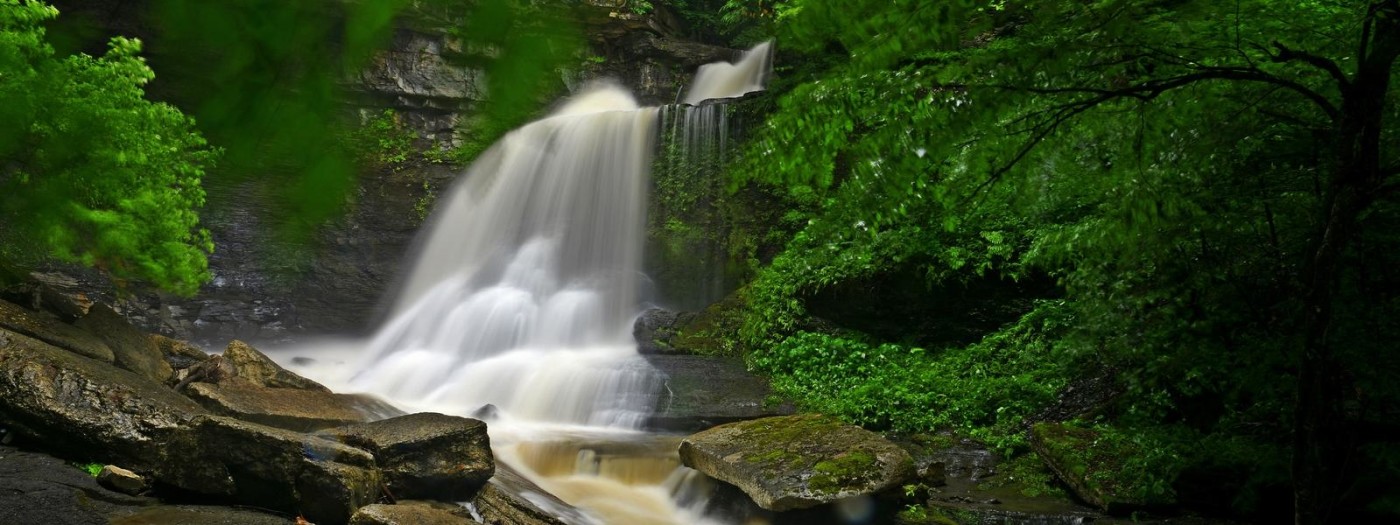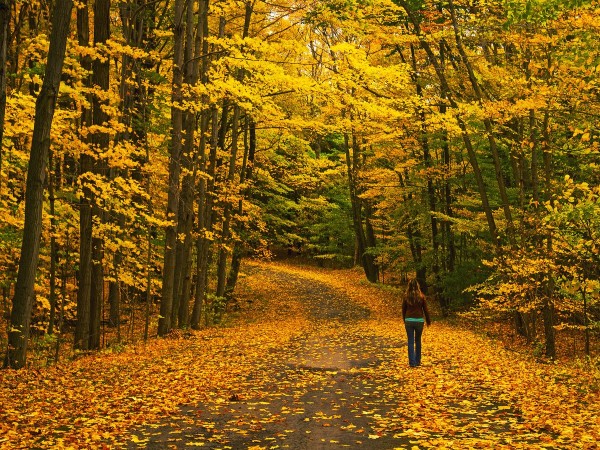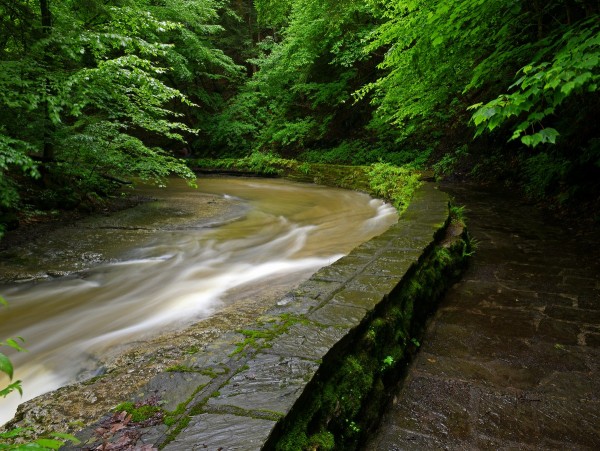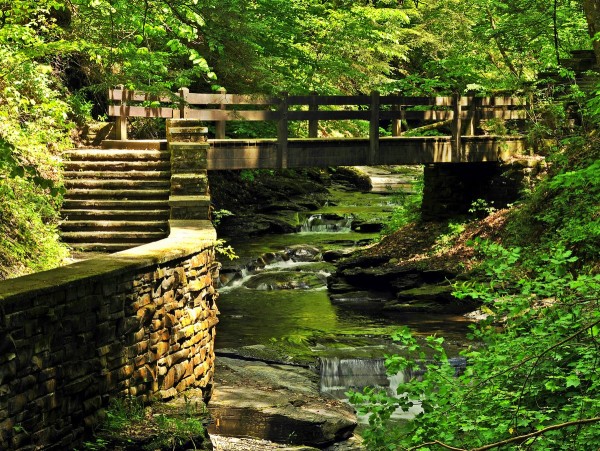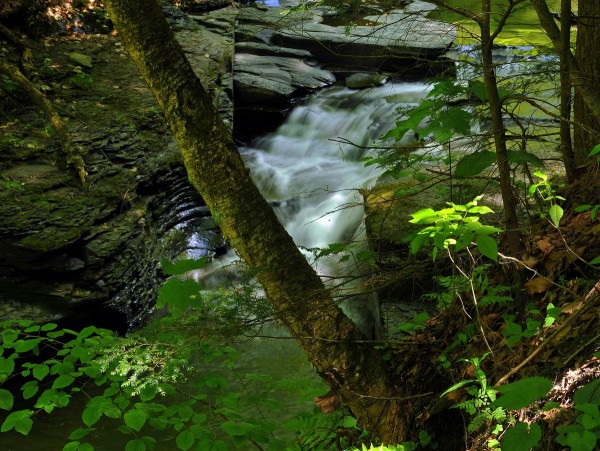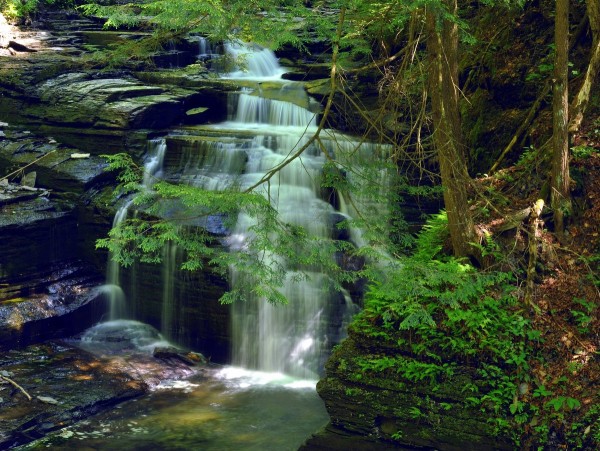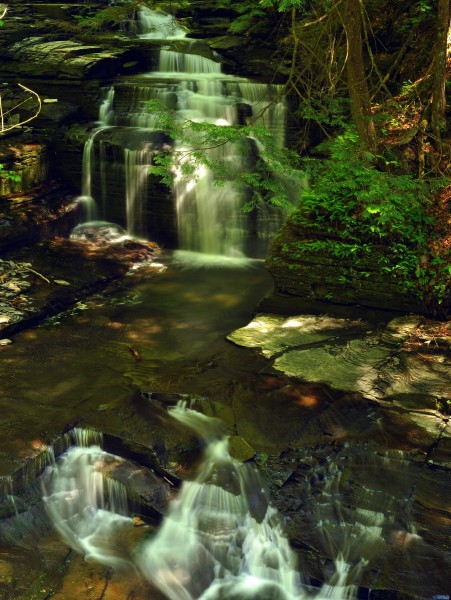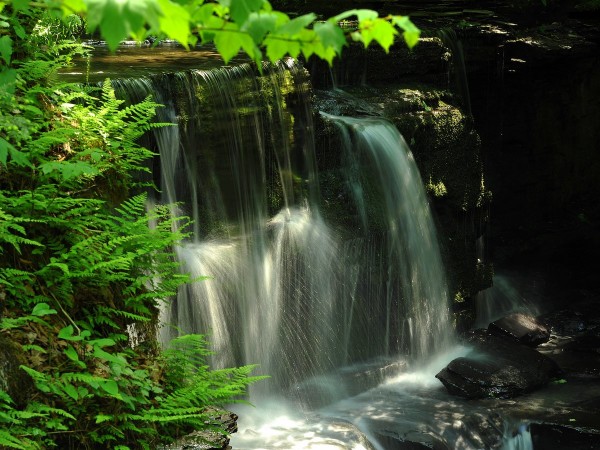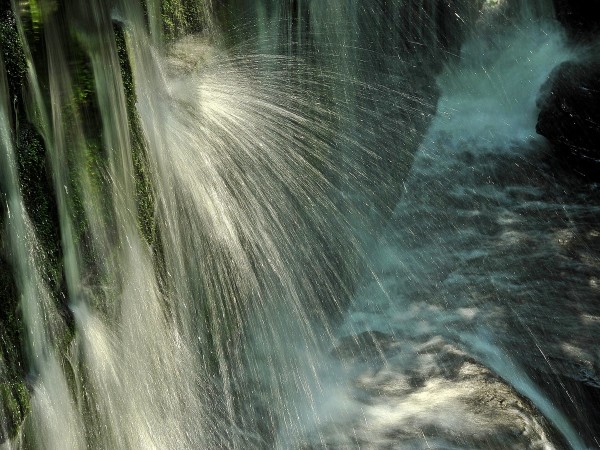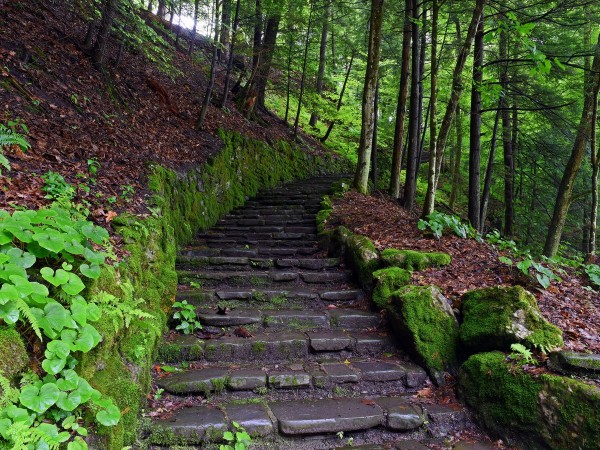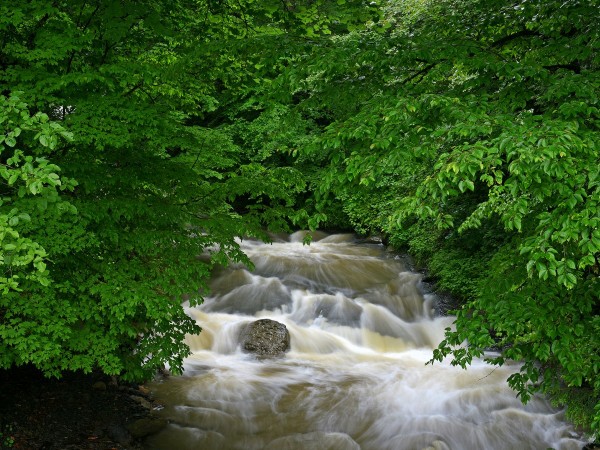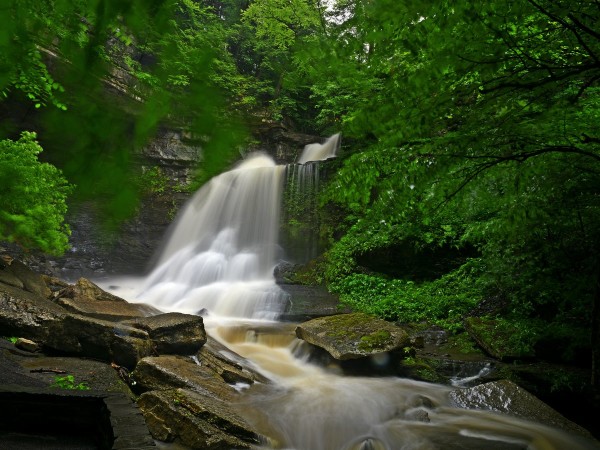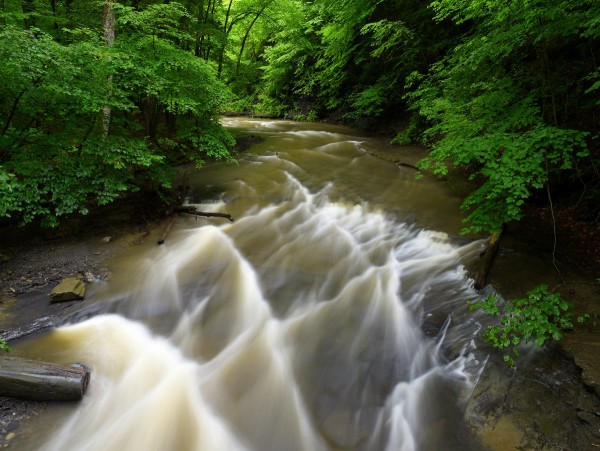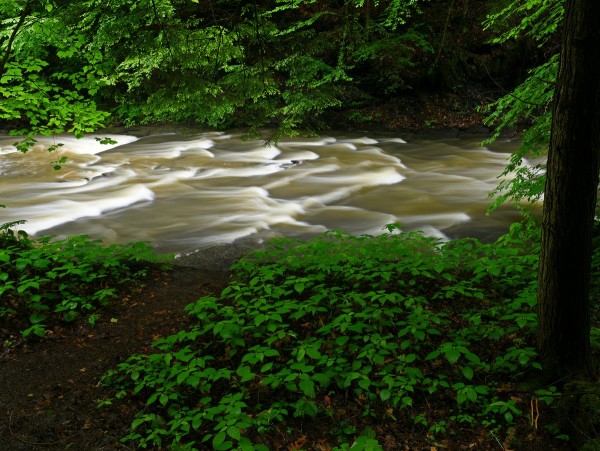Not every waterfall and gorge trail is located in Ithaca. Approximately twenty miles north, in the quiet village of Moravia, is another beautiful gorge park — Fillmore Glen. It features campgrounds, a swimming area, and of course a deep gorge with stunning waterfalls just like its southerly brethren: Buttermilk Falls, Robert Treman, Taughannock Falls, and Watkins Glen State Parks.
Like these other iconic parks, the trails and infrastructure at Fillmore Glen were created and enhanced by the Civilian Conservation Corps (CCC) in the 1930s. Stone-walled paths, numerous bridges that crisscross the oddly named Dry Creek, and stone staircases are all beautifully and thoughtfully blended with the stunning natural setting. The whole family will enjoy the natural marvels along the trails with plenty of picnic tables and pavilion spaces to spend a day in the park.
Three trails are available to explore: the north rim, the south rim, and the real gem — the gorge trail. While the rim trails are open year-round, the gorge trail is only open from late spring to late fall. Its closure is predictable, but trail opening varies depending on the damage winter, and subsequent spring-time floods, have had on the narrow gorge. Fortunately, spring cleaning rarely extends past late May and trail openings are regularly posted on the park’s web site.
The wooded gorge, with its cool waters, provides welcome relief during the hot and hazy days of summer. Hikers are not the only creatures who have sought this refuge. Rumor has it that before the state acquired the park in 1925, cows from nearby farms would often wander into the gorge seeking relief. Perhaps not the most noteworthy tale, but it is memorialized by the first-named natural feature in the park — the “Cowsheds” — a water-carved stone amphitheater encompassing the first waterfall. It’s another stunning example of the Finger Lakes’ unique geology and the ways water has sculpted the region. In the amphitheater, we see a hard and erosion-resistant limestone capstone that sits above softer shale layers that have been carved away underneath. See similar phenomena at Carpenter Falls Unique Area, Tinkers Falls in Morgan Hill State Forest, and Taughannock Falls State Park.
The first falls, sometimes called Cowsheds Falls or simply First Falls, are wheelchair accessible while the other parts of the gorge are only reached after a brief but steep climb. After the initial climb, the trail through the gorge is relatively flat and easily negotiated. Further along the gorge are several stunning smaller cascades and waterfalls that culminate with the tallest falls, Dalibarda Falls, followed shortly after by Upper and Lower Pinnacle Falls. These last pair of waterfalls lies in a visually striking square-cut section of the gorge near the terminus of the gorge trail.
Late spring, early summer, and/or after periods of heavy rain are the best time to see the waterfalls in their most torrential states. However, autumn is also a notably beautiful time to visit, either when the leaves are emblazoned with contrasting colors or just after fallen leaves reveal parts of the gorge previously hidden from view by the dense understory.
The park is named after the 13th president of the United States, Millard Fillmore, who came to office in 1850 after Zachary Taylor died in office. Fillmore was born roughly five miles away from the park, founded the University of Buffalo, and has several dubious political distinctions. First, he was the last Whig president. Second, he was the only Whig president not to die or be expelled from his party while in office. Third, he is one of five presidents who did not receive their party’s nomination as a candidate when actively seeking reelection. A replica of the log cabin he was born in is located near the main parking area and pavilion which is easily overlooked due to its surprisingly diminutive size.

